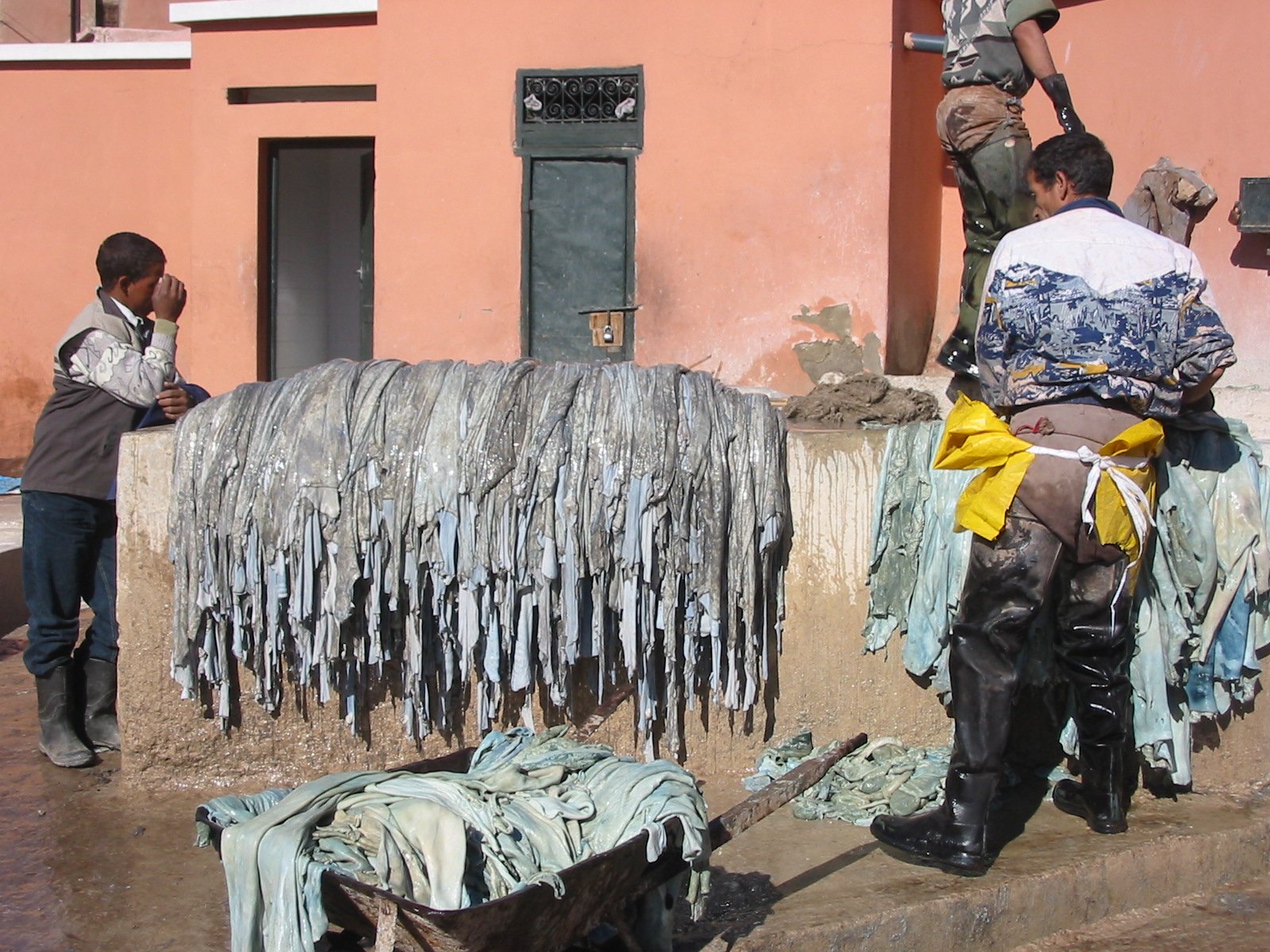The Mushroom Movement: Are fungi the key to a more sustainable leather future?
Written by: Leah Muehlich, European Regional Coordinator @ Threading Change
Editor: Sarah O’Rourke, Communications & Engagement Manager @ Threading Change
[6-minute read]
As one of the world’s most purchased products, leather is the engine of a multi-billion dollar industry. But consumers are increasingly becoming aware of its severe environmental impact. Bridging the gap between art, science, and manufacturing, mushroom leather producers promise to have found an innovative alternative to the animal-based material.
Cowskin leather is the third most impactful material of all to produce, according to the Higg Index – which assesses social and environmental impacts of materials. Leather production has high greenhouse gas emissions, lofty water use, and pollutes the air as well (Sustainable Apparel Coalition 2020).
Tanned leather in Marrakesh
The production of a single cow skin leather tote uses 17, 128 liters (L) of water and produces 100.5 kilograms (KGs) of carbon dioxide (Collective Fashion Justice 2021). In order to prevent hides from decomposing, leather goods are tanned, which in turn renders the items non-biodegradable. What's more, the tanning process uses toxic chemicals and gases like carcinogenic chromium, formaldehyde, and arsenic, which causes health issues amongst tannery workers and pollutes local waterways.
Leather is often referred to as a by-product of the meat industry and made out to be financially insignificant. This argument is used to claim that buying leather is not really supporting animal slaughter, but rather reducing waste. However, this is not accurate.
Leather is a profit-driven industry expected to reach 306.1 billion USD by 2027, with Adidas, Hermès and Kering amongst the main competitors (Business Wire 2020).
Demand for leather goods is rising, still the material is slowly losing its positive image, driven by a keen interest in sustainable alternatives.
While it is still too early to understand the carbon footprint of mushroom leather, unlike animal-derived leather, its production does not involve raising livestock.
The material can be produced within days and eliminates the resource intensity of raising livestock, which takes several years to process.
Mushroom leather is made from mycelium, the vegetative part of a fungus. The production is entirely closed-loop, meaning that post-consumer waste is reused. Sterilized agricultural waste is used as a growth medium on which mycelium cells grow to form a large, foamy 3D layer.
The growing process takes between two to three weeks. Once the mass of mycelium has reached the desired size, it is harvested and compressed to get the expected shape and size; with any leftover byproducts used as compost.
During the compression procedure, the manufacturer can alter the material texture and color, making it possible to replicate any kind of animal leather.
Mycelium also produces its own coating during growth, meaning the end product can be 100 percent mycelium, and thus biodegradable and compostable!
At the moment there are still only a few brands producing mushroom leather. The industry is growing and the first products will already be available on the market in 2022. Luxury brand Hermès has announced to remake their iconic Victoria shopper in cooperation with MycoWorks. Likewise, Bolt threads has associated with brands such as Adidas, Stella McCartney, and Lululemon to start developing products out of mushroom material.
Scalability is currently the primary disadvantage of mycelium derived leather alternatives. Since the mycelium must be cultivated within a growing medium over several weeks, it requires significant space to produce material at scale volumes. The vast space required is also costly to build out and support, requiring consistent humidity, pressure, temperature, and airflow control, which all come with their own respect carbon footprints.
In an interview with Forbes, Matt Scullin, CEO of MycoWorks, explained that “multiple versions of Reishi [their core mycelium material] will be produced in the future for different markets”. It’s when scale and multiple price points are achieved, that capture of a significant proportion of the global leather market would appear to be within their sights.
Shifting towards plant-based, sustainably, and ethically produced alternatives to leather will be crucial in order to achieve a more sustainable fashion future. While synthetic alternatives to leather, such as polyurethane, have already existed for several years, mushroom leather offers a biobased solution that doesn´t rely on fossil fuels for its production.
In the words of Matt Scullin: “Designers are looking for something that is neither animal, nor plastic but has the quality, the sensuality and the engineerability that allows them to make new designs.” Mushroom leather might just be the solution everyone was waiting for.
About the Author
Leah is a creative student at the Amsterdam Fashion Institute, where she focuses on connecting her passions for sustainability, fashion, and art.
Having grown up bilingual, now speaking five languages, different cultures have always shaped her personality and way of thinking. She followed a year of International Business and Intercultural Studies at the University of Passau, Germany, where she was able to gain an extensive knowledge of ethical business practices and intercultural communication.
Besides her studies and volunteering work, Leah loves dedicating her time to different crafts like sewing, crochet, or calligraphy.



